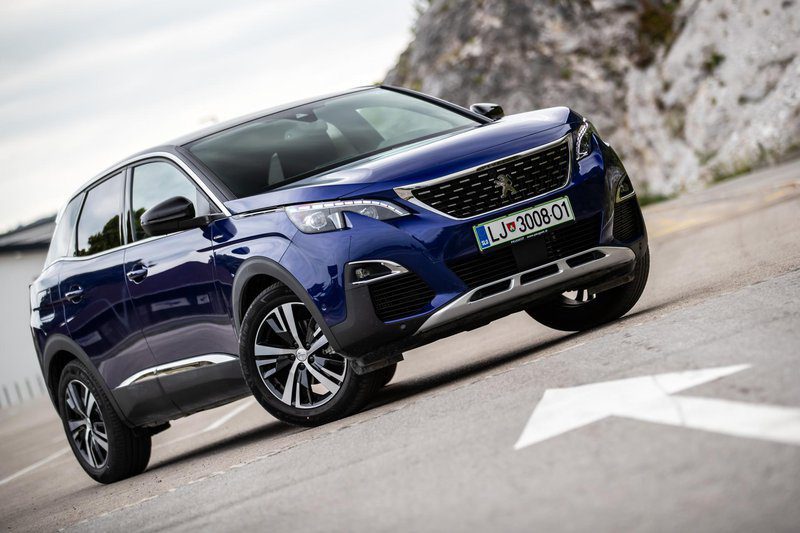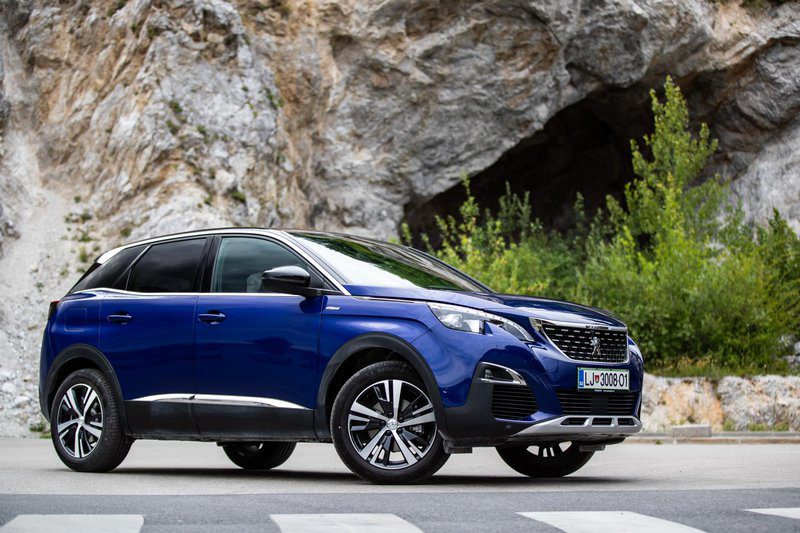
Short test: Peugeot 3008 GT Line 1.5 BlueHDi 130 EAT8
This year, Peugeot has included a new 3008-litre Blue HDi 1,5 S&S turbodiesel engine in its Peugeot 130 offering – and of course its other models, which, as the label says, deliver ten “horsepower” more power. which manifests itself especially at higher revs, but also develops more torque at lower revs. The new engine is paired with a new Aisin eight-speed torque converter transmission that is a good two kilograms lighter than its predecessor, as well as an Aisin six-speed gearbox, and above all, it delivers a sharper idle.

Peugeot says the new combination has mainly contributed to lower fuel consumption, which has finally confirmed our normal lap. If a Peugeot 3008 with a 120-horsepower turbodiesel and an older six-speed automatic transmission in the standard test consumed 5,7 liters of fuel per 100 kilometers, then the consumption on the standard scheme with a combination of a 130-horsepower engine and an eight-speed gearbox tested this time gear. the transmission dropped to 4,9 liters of diesel per 100 km. Some differences can be attributed to different seasons, but we can still confirm with confidence that the new combination brought improvements in this area.

But the new acquisition means not only lower fuel consumption, but much higher performance throughout the powertrain. The engine and gearbox are perfectly matched to each other, which is also reflected in the favorable power transfer to the ground. In addition, the transmission shifts smoothly and almost imperceptibly, and the needle on the tachometer hardly moves, so the shift is actually detected only by ear after a sudden change in engine sound. If “normal”, more comfort-oriented transmission operation is not for you, you can also use the SPORT button on the center console in this Peugeot 3008, which further shortens shift intervals and increases engine responsiveness, and also changes the operation of other car components. But the Peugeot 3008 with this engine/transmission combination is alive enough without it, so you'll only really use the SPORT program when you want a little more sportiness, which is also in line with the test car's equipment.

At the end of the name of the test Peugeot 3008 was the GT line, which - unlike the GT, which is a distinctly sporty version - emphasizes the sporty character of the "regular" versions and adds a lot to the car. Of course, like all other Peugeot 3008s, the test car is equipped with a new generation i-Cockpit with the latest infotainment technologies, from smartphone connectivity to a standard digital instrument cluster with the ability to customize the display to the taste of the driver, which can be completely classic. of course with the classic displays of speed and engine speed, minimal, when we see only the speed of movement on the screen, or those that show information about the car. It is also possible to display very useful navigation instructions, including a digital map, so that the driver does not have to look at the central infotainment display at the top of the dashboard. As with all new Peugeots, we can say that you have to get used to the different dashboard arrangement where you look at the gauges above the steering wheel instead of through it, but once you get used to it, it works very efficiently and even comfortable.

Despite the GT Line designation, the test Peugeot 3008 is also designed primarily for comfortable off-road driving, with the suspension absorbing bumps nicely. It also allows for shorter trips over poorly maintained and unpaved surfaces, and what's worse - precisely because of the soft comfort of the tuned and raised chassis - can be seen when cornering. But these are features we've already seen in every Peugeot 3008 that's been tested, as well as many other SUVs.
In the end, we can conclude that the Peugeot 3008 is also a comfortable and balanced car with its powertrain and equipment, which further confirms that it rightfully won the European Car of the Year title.
Read more:
Comparison test: Peugeot 2008, 3008 and 5008
Extended test: Peugeot 3008 Allure 1.2 PureTech 130 EAT
Test: Peugeot 3008 1.6 BlueHDi 120 S&S EAT6

Peugeot 3008 GT Line 1.5 BlueHDi 130 EAT8
Basic data
| Test model cost: | 33.730 € |
|---|---|
| Base model price with discounts: | 31.370 € |
| Test model price discount: | 30.538 € |
Costs (per year)
Technical information
| engine: | 4-cylinder - 4-stroke - in-line - turbodiesel - displacement 1.499 cm3 - maximum power 96 kW (130 hp) at 3.750 rpm - maximum torque 300 Nm at 1.750 rpm |
|---|---|
| Energy transfer: | front-wheel drive - 8-speed automatic transmission - tires 225/55 R 18 V (Michelin Saver Green X) |
| Capacity: | top speed 192 km/h - 0-100 km/h acceleration 11,5 s - average combined fuel consumption (ECE) 4,1 l/100 km, CO2 emissions 107 g/km |
| Mass: | empty vehicle 1.505 kg - permissible total weight 2.000 kg |
| External dimensions: | length 4.447 mm - width 1.841 mm - height 1.624 mm - wheelbase 2.675 mm - fuel tank 53 l |
| Box: | 520-1.482 l |
Our measurements
| T = 11 ° C / p = 1.028 mbar / rel. vl. = 55% / odometer status: 2.322 km | |
| Acceleration 0-100km: | 11,7s |
|---|---|
| 402m from the city: | 18,3 years ( 123 km / h) |
| Fuel consumption according to the standard scheme: | 4,9 l / 100km |
| Braking distance at 100 km / h: | 40,2m |
| AM table: | 40m |
| Noise at 90 km / h in 6rd gear | 58dB |
evaluation
The combination of a solid four-cylinder turbo diesel, an eight-speed automatic transmission and a robust chassis makes the Peugeot 3008 a comfortable everyday car that continues to live up to the good reputation it has built over the past two years. ...
We praise and reproach
form
driving and driving
engine and transmission
spaciousness and practicality
i-Cockpit takes some getting used to
with rather extensive equipment, remote unlocking is carried out by pressing a button on the key.
